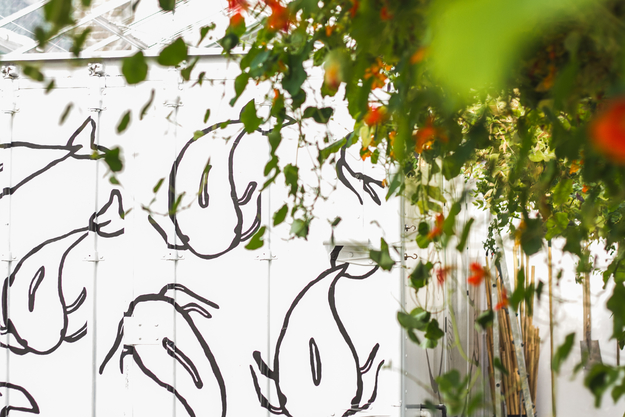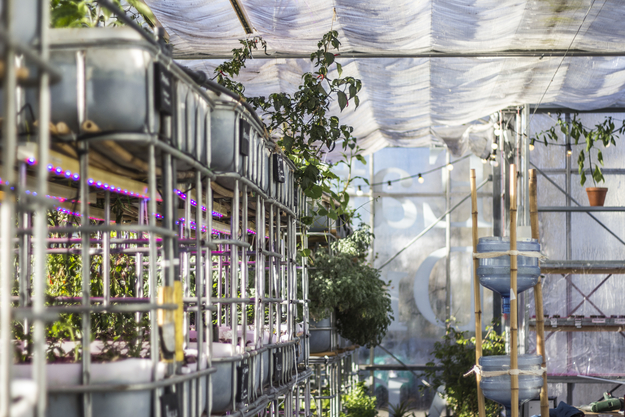10 years of learning - an honest review
Having an aquaponics greenhouse is a great way of showing natural cycles in a transparent way. It beatifully showcases the coexistence of plants, animals, and bacteria. We celebrate all the lessons we have learned about building our own farm, nutrient cycles, different growing mediums, different water sources, suitable and fun plants and tasty recipes, biological pest control, fish care and so much more. Learning and building alongside our visitors throughout the way has been the most exciting of all. Throughout our aquaponics journey we have tried to embrace principles of sustainability and organic agriculture, but we have also naturally stumbled upon pain points. These pain points have also been pointed out by many visitors joining our workshops and tours. Most of the pain points relate to the captivity and care of the catfish in our system.
The examples below illustrate some of these pain points
- Keeping fish in captivity raises questions about animal welfare. These questions are especially relevant as we have a plant-based kitchen 10 meters away from the greenhouse.
- Guaranteeing the right conditions (for example temperature or pH) for the fish was not always possible because of technical issues. For example, we have experienced issues like hypothermia induced death due to power outages.
- Heating the fish tanks is very energy intensive, which makes aquaponics inherently unsustainable.
- The system is not truly circular as we have to add fish food. Finding or producing a sustainable / vegan fish food that the fish like proved difficult.
- The cycle is also not closed because we have to add extra nutrients, and quite large amounts of water.
Keeping fish in an urban farming system
As pointed out, keeping fish in captivity is rather contrary to our current practice and beliefs. That is why we see it as a big responsibility to care of them to the best of our ability. We keep the fish in dark aquariums in an enclosed white shipping container. We do this because African catfish are bottom dwellers and don’t like bright light (source). We also carefully determined the amount of fish that we should keep in one tank (too many and they do not have enough space to swim, but too little and they become overly aggressive because of territorial behavior). Furthermore, we keep track of their eating behavior and the water quality on a daily basis. However, we cannot deny that we keep fish in captivity for our benefit and that this does not align with the ecocentric values we hold dear.
Aquaponics Catfish - Container for the catfish that feed the plants that feed the fish

Recent accident in the aquaponics farm
Unfortunately, recently many fish died due to an attempt to save energy by lowering the minimal temperature of the water. We are deeply saddened by this event and take full responsibility that this happened because of an uncalculated mistake from our side. Although this decision was made with good intentions, it did cost the lives of living beings under our care. We think this is unacceptable, and also recognize we may not be able to totally prevent any form of animal suffering if we continue with aquaponics.
Alternative scenarios
This reflection prompted us to think of alternative future scenarios. We would like to make a shift to organic hydroponics. Hydroponics is basically the same as aquaponics, but without the addition of fish farming. This means that the nutrients in the water flow are not produced within the system by fish or other organisms, but have to be added.
As we move to a hydroponics system we have to think about where to source our nutrients. We want to stick to organic principles so we want to use an organic fertilizer (which is a fertilizer made from plant- or animal based materials that are either a byproduct or end-product of naturally occurring processes). We want to avoid inorganic fertilizers (produced from rocks and minerals) as much as possible because they are usually produced in energy intensive processes, can be the cause of human labor issues, and can be the cause of environmental problems.
We will investigate three options for fertilizers in an organic hydroponics system:
- The use of bokashi to produce a liquid fertilizer (read more here)
- The use of human urine (which we already collect in our pure gold installation)
- The use of an organic fertilizer that’s on the market
What will stay the same and what will change?
In short, the transition from aquaponics to hydroponics will not involve too many changes. The setup of the system can stay the same. The vertical towers, including plants, growing medium, and biofilm can stay in place. Lastly, we will continue adding canal water to the system as part of our project Korreltje Zout.
The three main things that would change are the nutrient source, the possibility of a lower water temperature (and a lower energy use), and the fact that we move to a plant-based system, which aligns more with our values.
We are excited to explore a new direction and to share what we learn along the way.
